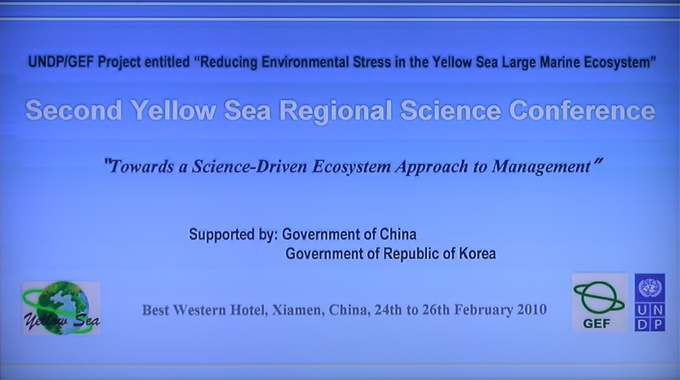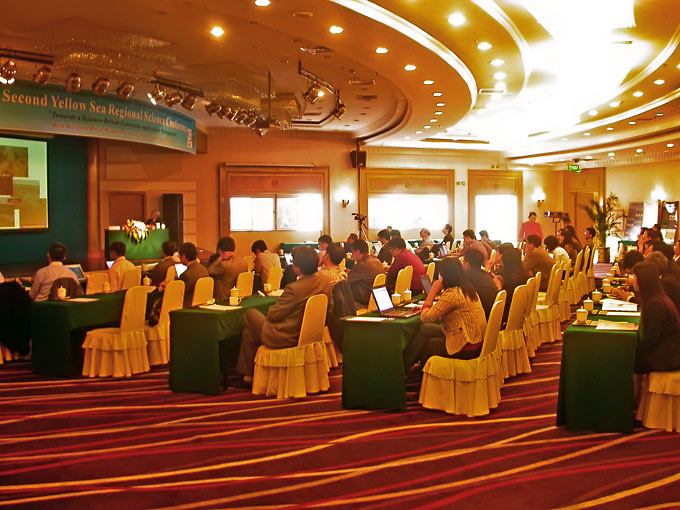Supported by the governments of China and the Republic of Korea and organised (excellently) by the UNDP/GEF Yellow Sea (YSLME) project, this conference pooled the knowledge of approximately 70 scientists from China, the ROK and the DPRK. The conference aimed for a range of presentations relating to a science-driven ecosystem approach to management in the Yellow Sea, with each presentation further relating to the various targets of the YSLME Strategic Action Programme, agreed to in November 2009 by the three governments.

At the invitation of the YSLME project, Birds Korea Director Nial Moores gave a presentation on the Birds Korea Blueprint for the Conservation of the Avian Biodiversity of the South Korean Yellow Sea, which included background information and a review of conservation issues in the three main habitat types of the Yellow Sea: inter-tidal areas, open sea areas and islands. In addition to the Saemangeum Shorebird Monitoring Program, slides were presented on potential threats posed by the Gageo Island Resort Plan, the anticipated impacts of the Four Rivers Project on waterbirds of estuaries, and conservation work at the Mokpo Namhang Urban Wetland.
While there was a range of interesting presentations, highlighting threats (e.g. as posed by the Incheon Tidal Power Plant which will cause massive negative impacts on the internationally important inter-tidal wetlands between Ganghwa and Yeongjong Islands) and solutions, two seemed especially relevant to bird distribution and conservation in the Yellow Sea. The first was by Dr. Xingang Lü, of the First Institute of Oceanography (Qingdao) who presented a hypothesis on summer upwelling in the Yellow Sea, highlighting the probable role of tidal currents and tidal mixing. As upwelling is probably associated with nutrient enrichment, it is also probably a major influence on the distribution of feeding bird species in summer, such as Streaked Shearwater Calonectris leucomelas and Swinhoe’s Storm Petrel Oceanodroma monorhis, the latter a species now known to be almost completely dependent on the Yellow Sea for breeding. The presentation by Dr. Zuo Ping of Nanjing University was also especially noteworthy. Following on from the East Asian Australasian Flyway Partnership meeting in Incheon (February 22nd-24th) which highlighted the need for monitoring not only of waterbirds but also of their habitats, Dr. Zuo presented on landscape changes between 1970 and 2007 at Yancheng Biosphere Reserve in Jiangsu province – a site well-known for its’ international importance for e.g. wintering Red-crowned Crane Grus japonensis and for Saunders’s Gull Chroicocephalus saundersi. Her powerpoint presentation, posted with permission, can be found here.




